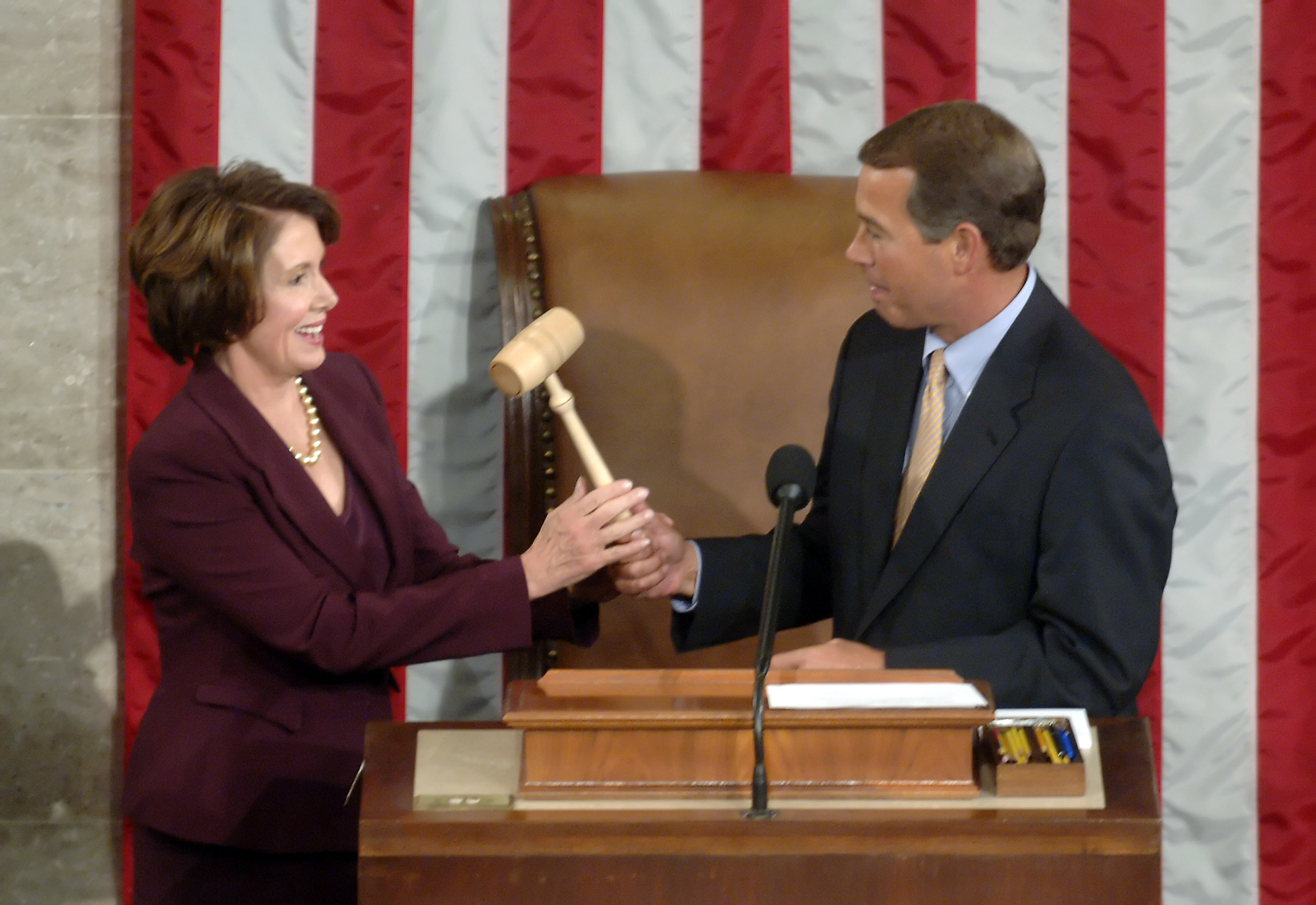
WASHINGTON (BP)–California congresswoman Nancy Pelosi was sworn in as the first female Speaker of the House of Representatives Jan. 4 as Democrats prepared to approve in the first 100 business hours of a new Congress a package of initiatives, including the provision of federal funds for stem cell research that destroys embryos.
While history was being made in the House, Democrats also regained their place as the majority party in the Senate. Sen. Harry Reid of Nevada was sworn in as majority leader.
The events marked the first time the Democrats have controlled both houses since the “Republican revolution” in the 1994 election gave the GOP majorities in both chambers. The Democrats hold a 233-202 edge in the House. The Democrats and Republicans both have 49 members in the Senate. There are two independents, both who will caucus with the Democrats, giving them majority status.
On the day before senators and representatives were sworn in, new House Majority Leader Steny Hoyer announced the schedule of actions by which the Democrats quickly plan to put their stamp on the new Congress. Debate on a bill to fund embryonic stem cell research is set for Jan. 11. Other measures the Democrats plan to act on between Jan. 9 and 18 include enacting the 9/11 Commission’s recommendations, increasing the minimum wage, negotiating for lower prescription drug prices and cutting interest rates on student loans.
Pelosi said she accepted the gavel as the new speaker in the “spirit of partnership, not partisanship,” after new Minority Leader John Boehner of Ohio handed it over to her.
She called her swearing-in as speaker “an historic moment” for Congress and America’s women. “For our daughters and our granddaughters, today we have broken the marble ceiling,” she said.
The stem cell measure would weaken President Bush’s policy, which bars federal grants for experiments that result in the destruction of human embryos. Bush’s rule allows funds for research only on embryonic stem cell lines already in existence when his policy was announced in August 2001.
The House approved such a bill last year, as did the Senate. Bush, however, used the first veto of his presidency on the legislation, and the House fell 51 votes short of an override. Unless numerous representatives reverse their votes this year, the House again will be unable to override a veto.
Stem cells are the body’s master cells that can develop into tissues and other cells, providing hope for the treatment of numerous afflictions. Their extraction from embryos, however, destroys the days-old human beings.
Unlike research using embryos, extracting stem cells from non-embryonic sources –- such as umbilical cord blood, placentas, fat and bone marrow –- does not harm the donor and has produced treatments for at least 72 ailments, according to Do No Harm, a coalition promoting ethics in research. These include spinal cord injuries, rheumatoid arthritis, lupus, multiple sclerosis and sickle cell anemia.
–30–
















